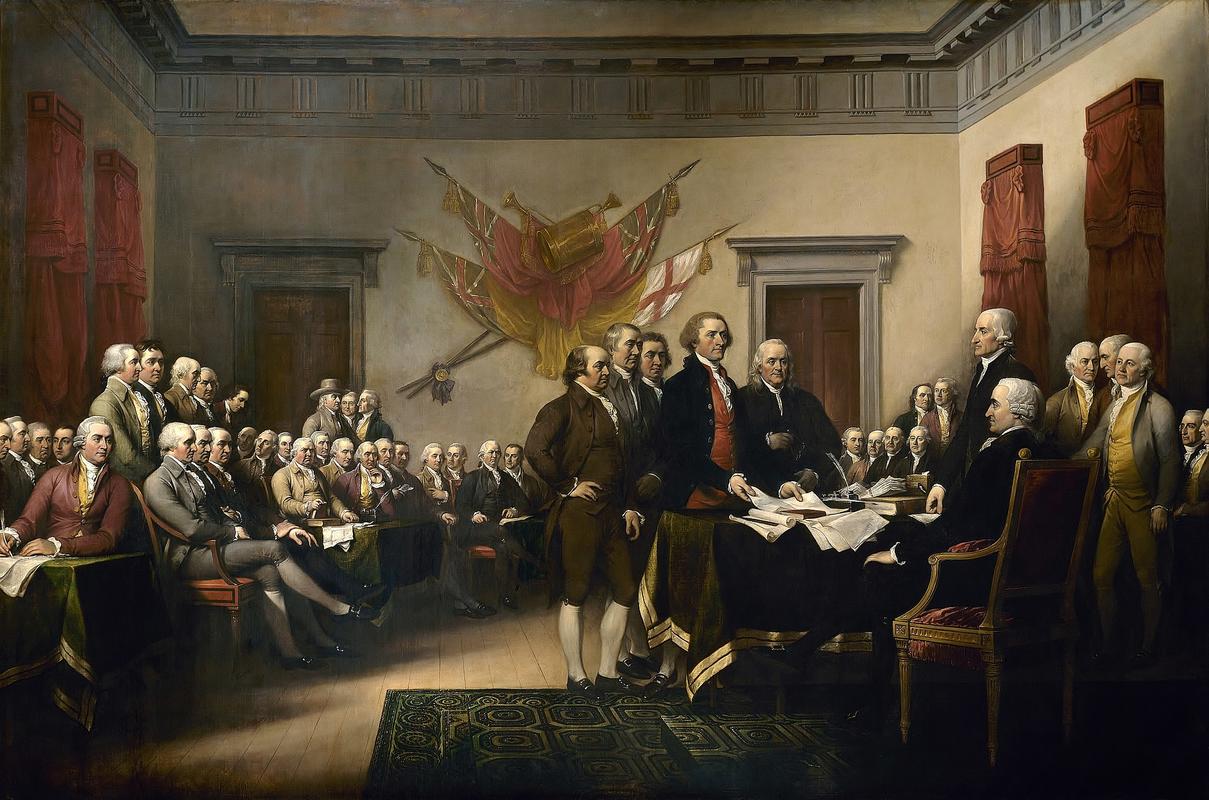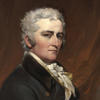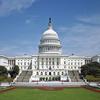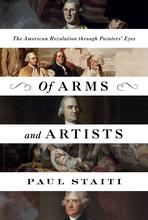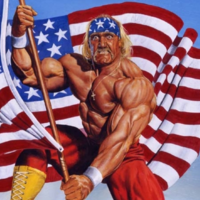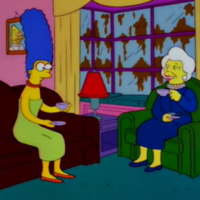More about Declaration of Independence
- All
- Info
- Shop

Sr. Contributor
John Trumbull's Declaration of Independence depicts history in IMAX as it absolutely, positively did not happen.
What we have here is the presentation of the Declaration of Independence by Jefferson and crew to John Hancock and the Second Continental Congress. In truth only Jefferson, Hancock, and maybe a few others would have been present. There also wouldn't have been the battle flags on the back wall (as the Revolutionary War wouldn't officially begin for a few weeks after this particular moment), the drapes would have been blinds, and the layout of the room would have been entirely different. Trumbull got the layout direct from a drawing by Thomas Jefferson, but either Tommy boy misremembered or Trumbull misinterpreted what he had to say.
Trumbull wasn't trying to show what happened. The point was what this moment meant for all us blue blooded Americans down the road. The painting's depicting the spirit behind the Declaration of Independence. The choose your own adventure portion of that is either to concentrate on all of the individuals gathering peacefully to create a nation based on abstract ideals like freedom, or to see a bunch of homogenous, wealthy slave holders pissed off that the king across the ocean won't listen to their whining about taxes and individual agency in government.
Declaration is one of four massive murals by Trumbull to prettify the U.S. Capitol's Rotunda. It's based on a much smaller original currently hanging in Yale that those in the know consider far superior to the megabeast in Washington. It's not that Trumbull half-assed the widescreen edition of his interpretation of the nation's founding; his eyesight was failing from a childhood injury. That's also the reason attributed to the optical illusion in the work that makes Thomas Jefferson look like he's standing on John Adams' foot. Although, Rotunda gossip would have you believe that Jefferson pleaded Trumbull to do something that would put founding rival Adams in his place. If there were any truth to that, anyway, Trumbull wouldn't have put Adams smack dab in the middle of the painting.
Trumbull's oversized reproduction has come a long way in popularity. It's unveiling was decried by haters all over DC . The number of historical goofs and the amount of male leg drove folks mad. One leg-crazy member of the House of Representatives called the painting a 'Shin piece,' because of all the stockinged appendages dangled saucily about. Luckily, America's love for the painting and insult game have come a long way. Declaration is the most popular mural in the Rotunda, so keep your DC vacation's selfie game strong by arriving early. Although, if the line sucks (which it probably will) you could just look at the back of a $2 bill to see a reproduction up close, in beautiful solitude. If you do go, make sure it's on view. DC's muggy climate means that the Rotunda murals get cleaned on the regular. Trumbull himself did the first upkeep project in 1828, with the most recent round having happened in 2008.
Sources
- http://www.library.fordham.edu/trumbull/founding.html
- http://xroads.virginia.edu/~cap/desoto/trumbull.html
- https://www.aoc.gov/art/historic-rotunda-paintings/declaration-independ…
- https://uschs.wordpress.com/2011/11/04/trumbulls-declaration-of-indepen…
- https://www.bostonglobe.com/opinion/2015/07/02/declaration-independence…
- http://www.wsj.com/articles/SB118315984315553633
Featured Content
Here is what Wikipedia says about Declaration of Independence (painting)
Declaration of Independence is a 12-by-18-foot (3.7 by 5.5 m) oil-on-canvas painting by the American artist John Trumbull depicting the presentation of the draft of the Declaration of Independence to Congress. It was based on a much smaller version of the same scene, presently held by the Yale University Art Gallery. Trumbull painted many of the figures in the picture from life, and visited Independence Hall to depict the chamber where the Second Continental Congress met. The oil-on-canvas work was commissioned in 1817, purchased in 1819, and placed in the United States Capitol rotunda in 1826.
The painting is sometimes incorrectly described as depicting the signing of the Declaration of Independence. The painting shows the five-man drafting committee presenting their draft of the Declaration to the Congress, an event that took place on June 28, 1776, and not its signing, which took place mainly on August 2.
The painting shows 42 of the 56 signers of the Declaration; Trumbull originally intended to include all 56 signers but was unable to obtain likenesses for all of them. He also depicted several participants in the debate who did not sign the document, including John Dickinson, who declined to sign. Trumbull had no portrait of Benjamin Harrison V to work with, but his son Benjamin Harrison VI was said to resemble his father, so Trumbull painted him instead. Similarly, Trumbull painted Rufus Hopkins, who resembled his father Stephen Hopkins, for whom no portrait was available. As the Declaration was debated and signed over a period of time when membership in Congress changed, the men featured in the painting never were in the same room at the same time.
Although Thomas Jefferson appears to be stepping on John Adams' shoe in the painting, which many thought symbolized their relationship as friendly rivals, upon closer examination it can be seen that their feet are merely close together. This part of the image was correctly depicted on the two-dollar bill version.
On the farthest wall hangs a display of trumpets, drum, and regimental colours captured from British regiments. This is not depicted in all versions, most notably the one seen on the two-dollar bill.
Check out the full Wikipedia article about Declaration of Independence (painting)

